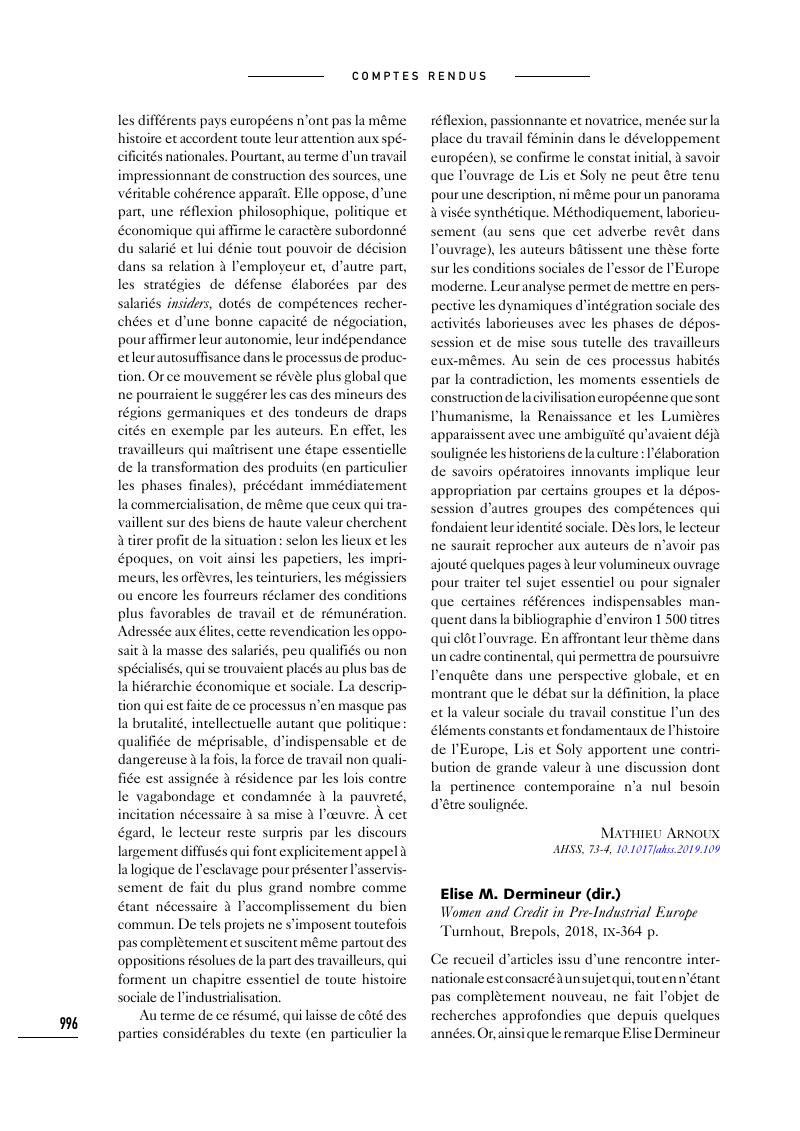No CrossRef data available.
Article contents
Elise M. Dermineur (dir.) Women and Credit in Pre-Industrial Europe Turnhout, Brepols, 2018, IX-364 p.
Published online by Cambridge University Press: 11 March 2020
Abstract

- Type
- Histoire sociale
- Information
- Copyright
- © Éditions de l'EHESS
References
1 Andrea Bardyn, « The ‘Egalitarian Trend’ in Practice: Female Participation in Capital Markets in Late Medieval Leuven », et Matteo Pompermaier, « Women and Credit in Eighteenth-Century Venice: A Preliminary Analysis », in A. Bellavitis et B. Zucca Micheletto (dir.), Gender, Law and Economic Well-Being in Europe from the Fifteenth to the Nineteenth Century: North versus South ?, New York, Routledge, 2019, respectivement p. 167-182 et 183-199.
2 Sur la dot comme dette entre les familles et comme crédit ouvert dont les femmes peuvent profiter, voir notamment Isabelle Chabot, La dette des familles. Femmes, lignages et patrimoine à Florence aux XIV eet XV e siècles, Rome, École Française de Rome, 2011 ; Zucca Micheletto, Beatrice, Travail et propriété des femmes en temps de crise (Turin, XVIIIe siècle), Mont-Saint-Aignan, PURH, 2014 ;Google ScholarDe Rosa, Maria Rosaria, A tempo debito. Donne, uomini, relazioni di credito a Napoli tra Ottocento e Novecento, Rome, Viella, 2017.Google Scholar




